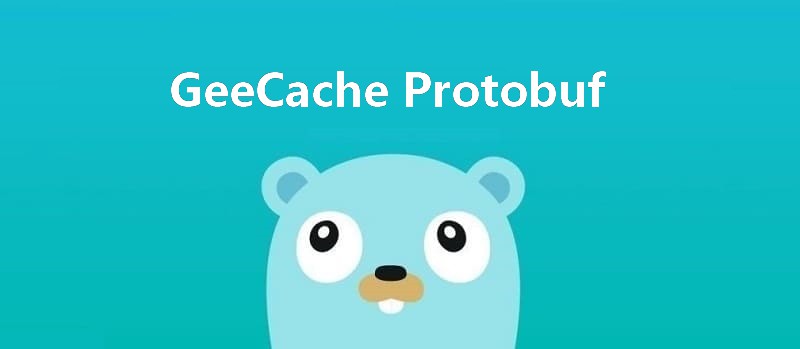动手写分布式缓存 - GeeCache第七天 使用 Protobuf 通信
源代码/数据集已上传到 Github - 7days-golang

本文是7天用Go从零实现分布式缓存GeeCache的第七篇。
- 为什么要使用 protobuf?
- 使用 protobuf 进行节点间通信,编码报文,提高效率。代码约50行
1 为什么要使用 protobuf
protobuf 即 Protocol Buffers,Google 开发的一种数据描述语言,是一种轻便高效的结构化数据存储格式,与语言、平台无关,可扩展可序列化。protobuf 以二进制方式存储,占用空间小。
protobuf 的安装和使用教程请移步 Go Protobuf 简明教程,这篇文章就不再赘述了。protobuf 广泛地应用于远程过程调用(RPC) 的二进制传输,使用 protobuf 的目的非常简单,为了获得更高的性能。传输前使用 protobuf 编码,接收方再进行解码,可以显著地降低二进制传输的大小。另外一方面,protobuf 可非常适合传输结构化数据,便于通信字段的扩展。
使用 protobuf 一般分为以下 2 步:
- 按照 protobuf 的语法,在
.proto文件中定义数据结构,并使用protoc生成 Go 代码(.proto文件是跨平台的,还可以生成 C、Java 等其他源码文件)。 - 在项目代码中引用生成的 Go 代码。
2 使用 protobuf 通信
新建 package geecachepb,定义 geecachepb.proto
day7-proto-buf/geecache/geecachepb/geecachepb.proto - github
1 | syntax = "proto3"; |
Request包含 2 个字段, group 和 cache,这与我们之前定义的接口/_geecache/<group>/<name>所需的参数吻合。Response包含 1 个字段,bytes,类型为 byte 数组,与之前吻合。
生成 geecache.pb.go
1 | $ protoc --go_out=. *.proto |
可以看到 geecachepb.pb.go 中有如下数据类型:
1 | type Request struct { |
接下来,修改 peers.go 中的 PeerGetter 接口,参数使用 geecachepb.pb.go 中的数据类型。
day7-proto-buf/geecache/peers.go - github
1 | import pb "geecache/geecachepb" |
最后,修改 geecache.go 和 http.go 中使用了 PeerGetter 接口的地方。
day7-proto-buf/geecache/geecache.go - github
1 | import ( |
day7-proto-buf/geecache/http.go - github
1 | import ( |
ServeHTTP()中使用proto.Marshal()编码 HTTP 响应。Get()中使用proto.Unmarshal()解码 HTTP 响应。
至此,我们已经将 HTTP 通信的中间载体替换成了 protobuf。运行 run.sh 即可以测试 GeeCache 能否正常工作。
总结
到这一篇为止,7 天用 Go 动手写/从零实现分布式缓存 GeeCache 这个系列就完成了。简单回顾下。第一天,为了解决资源限制的问题,实现了 LRU 缓存淘汰算法;第二天实现了单机并发,并给用户提供了自定义数据源的回调函数;第三天实现了 HTTP 服务端;第四天实现了一致性哈希算法,解决远程节点的挑选问题;第五天创建 HTTP 客户端,实现了多节点间的通信;第六天实现了 singleflight 解决缓存击穿的问题;第七天,使用 protobuf 库,优化了节点间通信的性能。如果看到这里,还没有动手写的话呢,赶紧动手写起来吧。一天差不多只需要实现 100 行代码呢。
附 推荐
last updated at 2023-11-15



